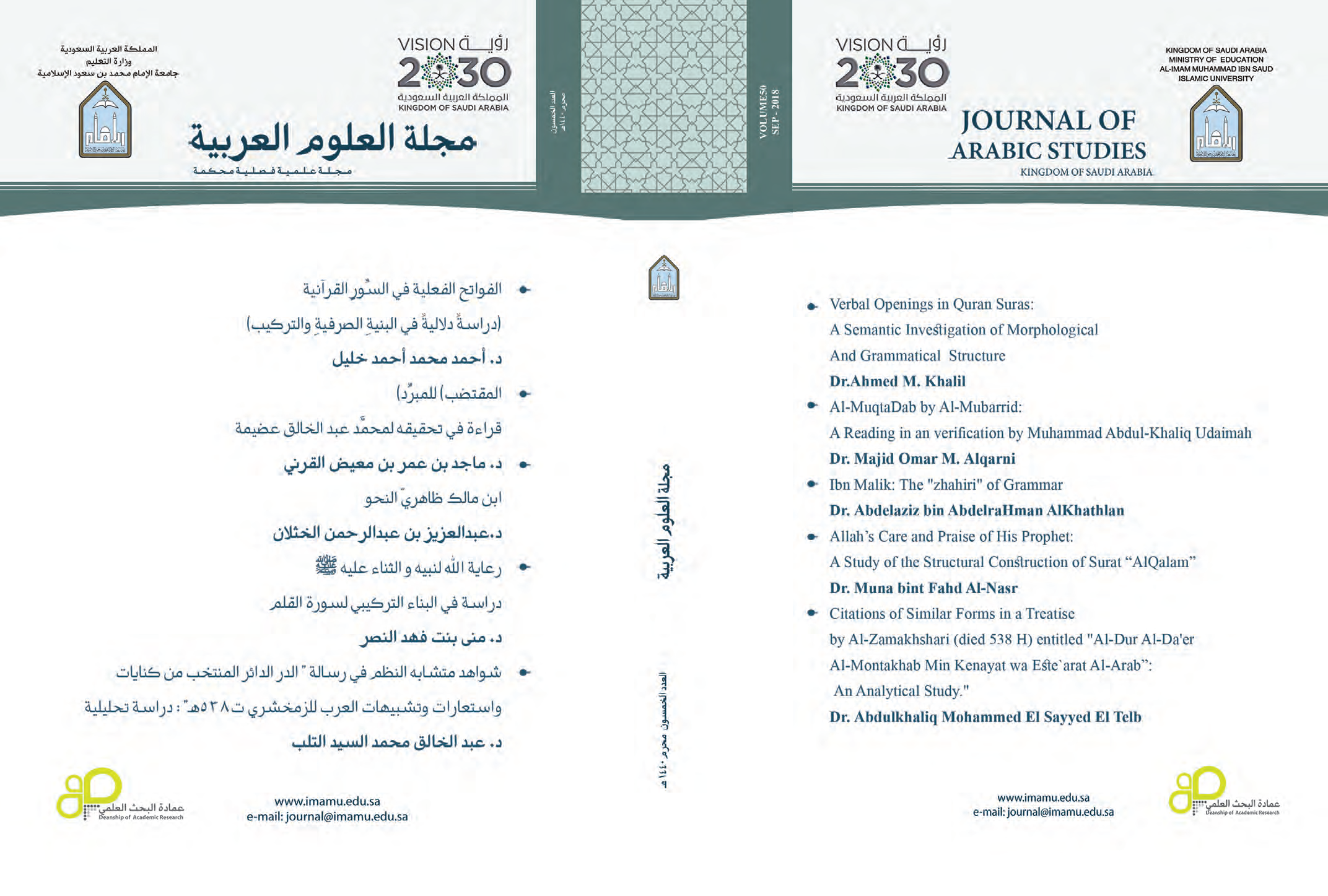Citations of Similar Forms in a Treatise by Al-Zamakhshari (died 538 H) entitled "Al-Dur Al-Da'er Al-Montakhab Min Kenayat wa Este`arat Al-Arab”
An Analytical Study
Abstract
This research is concerned with studying citations of similar forms in a treatise by Al-Zamakhshari (died in 538 H) entitled "Al-Dur Al-Da'er Al-Montakhab" Selection from Circulated Pearls) , which is among many of the Quranic citations used to prove that the Holy Quran was revealed in accordance with the Arabs’ language traditions, and used their methods in clarification. The Holy Quran contains explicit texts that can be directly understood by the listeners, allowing no differences. It also contains parts that include metonymies, allusions and metaphors. The Holy Quran was revealed in both explicit and metaphorical language to prove the inability of humans to imitate it, as if they are told: "you cannot produce anything like it in factual or metaphorical language."
Al Zamakhshari classified the citations sequentially without any comment or reference to the semantic, composition, or contextual aspect. Thus, the idea of the present research is to detect the differences between these citations, specify their meanings, examine the suitability of each to its context, and identify the secret of selecting each composition in its place. All of these make aspects of the manifestations of the i`jaaz (miracle) of the Quran, since with the multiplicity of the meaning of an item in different places in Quran, one finds that each place will have its intended meaning and the secret characterizes it according to the purpose(s) and goals depending on its position in the context.
The study has come to a number of results, including:
- Most of the citations mentioned by "Al Zamakhshari" in this treatise are presented with his explication in his book "Al Kashaf", showing some case of semantic differences, and the secret of selecting each composition in its specific context. In other contexts, he describes them as cases of synonymy, or having the same meaning in two positions, claiming that the difference lies in the art of repetition of meaning including the case with no similarity at all.
- All attempts to explore and disclose the manifestations of miracle in the Holy Quran, especially the explication of similar composition and considerations of context, are no more than exegesis by scholars which can be right or wrong. Therefore, the miracle of Quran is one thing, and explication is another thing.
The opinion concerning art and repetition of meaning in the Quran by scholars like: Al-Zamakhshari (died in 538 AH), Abi Hayyan (died in 745 AH), Ibn Adel Al-Hanbali (died in 775 AH), and Al-Taher ibn Ashour (died in 1393 AH), reflects a position which needs scrutiny and revision, despite the fact that art in itself is a form of rhetoric. But the more apt position is the one which sees the Quranic composition to have the art and the specific meaning that needs to be extracted or subtlety to be deduced.




